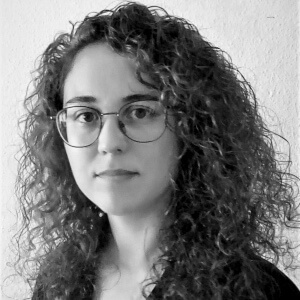High-Capacity Students: A Challenge for Schools


Written and verified by the psychologist Isabel Monzonís Hinarejos
High capacity students, gifted students, talented, precocious, geniuses…. we use these terms to refer to the kinds of students who are way above average. In this article, we’ll discuss what these pupils are like. In addition, how to successfully work with them at school.
As a rule, the terminology we use to describe these kinds of students tends to be rather indiscriminate. For this reason, we need to differentiate between the different types of high-capacity students.
- Precocious student. A student who presents a higher level of development than their peers. Furthermore, they acquire knowledge and skills earlier than expected for their age. Precocity usually indicates high capacity. However, this isn’t always the case. In these particular instances, students will, over time, end up at the same level as the rest of their class.
- Talented child. A child who possesses great skill in a particular area. However, in other areas, their performance might be normal or even low. Their particular gifts might be mathematical, social, or verbal.
- High-capacity students. We call these students gifted. They’re usually extremely intelligent. They also have high levels of creativity (divergent thinking), motivation, and curiosity. In addition, they often have an extremely good memory, and high concentration and attention levels. They also tend to be experts in metacognitive processes. At the emotional level, they often possess self-concept and high self-esteem. These are linked to high academic performance. Nevertheless, this is a generalization and these characteristics will vary from child to child.

Difficulties with high capacity children
Sometimes, their high capacity abilities go unnoticed. Furthermore, they might behave badly. This is because they aren’t like the average child of their age. Consequently, it’s normal for certain difficulties to arise. These might be:
- They hide their abilities in order to be accepted.
- Show disinterest in most academic subjects.
- They have poor study habits.
- Teachers find it difficult to challenge them, due to their verbal skills.
- Others might see them as uncooperative.
- They may feel rejected by their peers.
- Sometimes, they get bored and frustrated in class.
- They don’t do their homework and make excuses for not doing it.
- They only focus on activities that interest them, like video games and reading.
Methods of working with high-capacity students
Before establishing a work plan, the teacher needs to take into account each student’s individual characteristics. These students aren’t all the same. Consequently, what works for one might not work for another.
However, there are three main educational measures that teachers tend to implement. Firstly, they could make the schooling period more flexible. Or they could accelerate it and place the child in a higher grade. Secondly, they enlarge the school curriculum. Thirdly, they could enrich the school curriculum.
Flexibilization or acceleration of the schooling period
This is an extraordinary measure. It refers to two different situations. In the first case, the student starts an educational grade earlier than normal. For example, they start primary education at age five instead of six. In the second case, the student skips a grade. For example, after finishing third grade, they move directly to grade five.
Enlarging the curriculum
These are individualized measures to expand the student’s curriculum. For example, the teacher adds material from a higher-level grade. Alternatively, they instruct the student to study their own course materials more in-depth.
They call this vertical or horizontal expansion, respectively. Other procedures might be to discard content that the student already knows and include others they haven’t mastered. The goal is to ensure that the student remains motivated, doesn’t get bored, and learns at their own pace.
On the other hand, teachers can increase the student’s autonomy. This means that they give the student more independence and more of a say in their learning process. Or the teacher can explore the possibility of applying different evaluation techniques from those they use with their other students.
Enriching the curriculum
The teacher gives the student different content from that of the school curriculum. For example, writing workshops, science clubs, creating a magazine or radio program. In addition, extracurricular activities such as chess or painting, etc.

Terrasier’s desynchronization
One problem that can arise when establishing measures to work with these students is what’s known as Terrassier’s desynchronization. This refers to a child’s different rates of cognitive, motor, affective, and linguistic development.
For example, a child might be very intellectually advanced. However, their emotional level may be more typical of a child of their own age. In these kinds of situations, teachers must carefully consider any acceleration of the school period or advancement of the course. This is because it could end up having more negative than positive consequences. These types of decisions are always accompanied by a certain degree of uncertainty. In fact, all the available options come with an element of loss or risk.
High capacity students, gifted students, talented, precocious, geniuses…. we use these terms to refer to the kinds of students who are way above average. In this article, we’ll discuss what these pupils are like. In addition, how to successfully work with them at school.
As a rule, the terminology we use to describe these kinds of students tends to be rather indiscriminate. For this reason, we need to differentiate between the different types of high-capacity students.
- Precocious student. A student who presents a higher level of development than their peers. Furthermore, they acquire knowledge and skills earlier than expected for their age. Precocity usually indicates high capacity. However, this isn’t always the case. In these particular instances, students will, over time, end up at the same level as the rest of their class.
- Talented child. A child who possesses great skill in a particular area. However, in other areas, their performance might be normal or even low. Their particular gifts might be mathematical, social, or verbal.
- High-capacity students. We call these students gifted. They’re usually extremely intelligent. They also have high levels of creativity (divergent thinking), motivation, and curiosity. In addition, they often have an extremely good memory, and high concentration and attention levels. They also tend to be experts in metacognitive processes. At the emotional level, they often possess self-concept and high self-esteem. These are linked to high academic performance. Nevertheless, this is a generalization and these characteristics will vary from child to child.

Difficulties with high capacity children
Sometimes, their high capacity abilities go unnoticed. Furthermore, they might behave badly. This is because they aren’t like the average child of their age. Consequently, it’s normal for certain difficulties to arise. These might be:
- They hide their abilities in order to be accepted.
- Show disinterest in most academic subjects.
- They have poor study habits.
- Teachers find it difficult to challenge them, due to their verbal skills.
- Others might see them as uncooperative.
- They may feel rejected by their peers.
- Sometimes, they get bored and frustrated in class.
- They don’t do their homework and make excuses for not doing it.
- They only focus on activities that interest them, like video games and reading.
Methods of working with high-capacity students
Before establishing a work plan, the teacher needs to take into account each student’s individual characteristics. These students aren’t all the same. Consequently, what works for one might not work for another.
However, there are three main educational measures that teachers tend to implement. Firstly, they could make the schooling period more flexible. Or they could accelerate it and place the child in a higher grade. Secondly, they enlarge the school curriculum. Thirdly, they could enrich the school curriculum.
Flexibilization or acceleration of the schooling period
This is an extraordinary measure. It refers to two different situations. In the first case, the student starts an educational grade earlier than normal. For example, they start primary education at age five instead of six. In the second case, the student skips a grade. For example, after finishing third grade, they move directly to grade five.
Enlarging the curriculum
These are individualized measures to expand the student’s curriculum. For example, the teacher adds material from a higher-level grade. Alternatively, they instruct the student to study their own course materials more in-depth.
They call this vertical or horizontal expansion, respectively. Other procedures might be to discard content that the student already knows and include others they haven’t mastered. The goal is to ensure that the student remains motivated, doesn’t get bored, and learns at their own pace.
On the other hand, teachers can increase the student’s autonomy. This means that they give the student more independence and more of a say in their learning process. Or the teacher can explore the possibility of applying different evaluation techniques from those they use with their other students.
Enriching the curriculum
The teacher gives the student different content from that of the school curriculum. For example, writing workshops, science clubs, creating a magazine or radio program. In addition, extracurricular activities such as chess or painting, etc.

Terrasier’s desynchronization
One problem that can arise when establishing measures to work with these students is what’s known as Terrassier’s desynchronization. This refers to a child’s different rates of cognitive, motor, affective, and linguistic development.
For example, a child might be very intellectually advanced. However, their emotional level may be more typical of a child of their own age. In these kinds of situations, teachers must carefully consider any acceleration of the school period or advancement of the course. This is because it could end up having more negative than positive consequences. These types of decisions are always accompanied by a certain degree of uncertainty. In fact, all the available options come with an element of loss or risk.
All cited sources were thoroughly reviewed by our team to ensure their quality, reliability, currency, and validity. The bibliography of this article was considered reliable and of academic or scientific accuracy.
- Acereda, A. y Sastre, S. (1998) La superdotación. Madrid: Síntesis
- Aretxaga, L., Etxebarria, I., Galende, I., Santamaría, A., Uriarte, B., Albes, C., & Vigo, P. (2013). Orientaciones educativas: Alumnado con altas capacidades intelectuales.
- Gálvez, J. M. (2000). Alumnos precoces, superdotados y de altas capacidades. Ministerio de Educación.
- Rodríguez-Naveiras, E., Díaz, M., Rodríguez, M., Borges, A., & Valadez, M. D. (2015). Programa Integral para Altas Capacidades: “Descubriéndonos”. Una guía práctica de aplicación. México, DF.: Manual Moderno
This text is provided for informational purposes only and does not replace consultation with a professional. If in doubt, consult your specialist.







